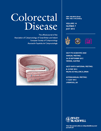Systematic review of small bowel diaphragm disease requiring surgery
Abstract
Aim To perform a systematic review of all cases of small bowel diaphragm disease requiring surgery. Small bowel diaphragm disease is a rare complication of small bowel enteropathy secondary to the use of non-steroidal anti-inflammatory drugs (NSAIDs). The objective was to determine the presenting symptoms, duration of NSAID use, mode of diagnosis and type of surgery associated with cases of small bowel diaphragm disease requiring surgery.
Method A comprehensive search of the world literature between January 1980 and December 2010 was undertaken. The search terms ‘diaphragm disease’ and ‘mucosal diaphragm disease’ in combination with the terms ‘surgery’, ‘intestine’ or ‘small bowel’ were used. All cases of small bowel diaphragm disease requiring surgery in adult patients within the the last 30 years were included. Data including age, gender, mode of presentation, NSAID use, mode of diagnosis, form of surgery, affected area of small bowel and mortality were recorded and analysed.
Results There were 55 cases of small bowel diaphragm disease requiring surgery (31F:18M) with a median age of 69 years. NSAID use occurred in 44 cases and the mean duration of NSAID use was 7 years. The most common presentation was with anaemia in combination with obstructive symptoms. The diagnosis was established by a laparotomy in 51% of cases followed by capsule endoscopy in 25% of cases. Operations performed included small bowel resection (56), combined resection and strictureplasty (three), strictureplasty (one) and hemicolectomy (two). There was only one death.
Conclusion Small bowel diaphragm disease presenting as a surgical emergency is likely to become more common due to the increased use of NSAIDs. A history of NSAID use in patients with iron deficiency anaemia or obstructive symptoms should lead to a high index of suspicion for this condition and should be preoperatively investigated.




